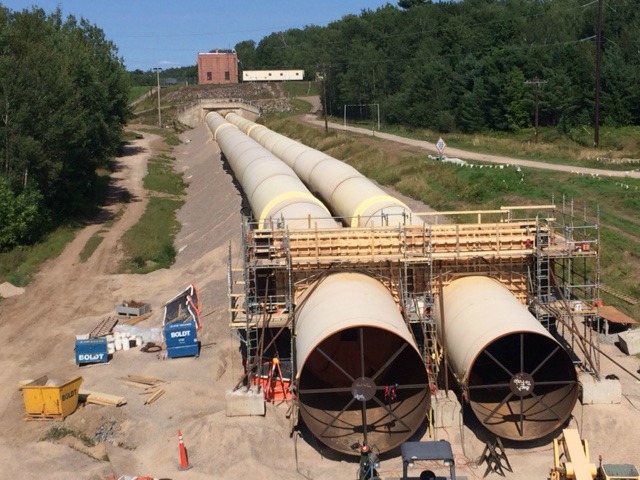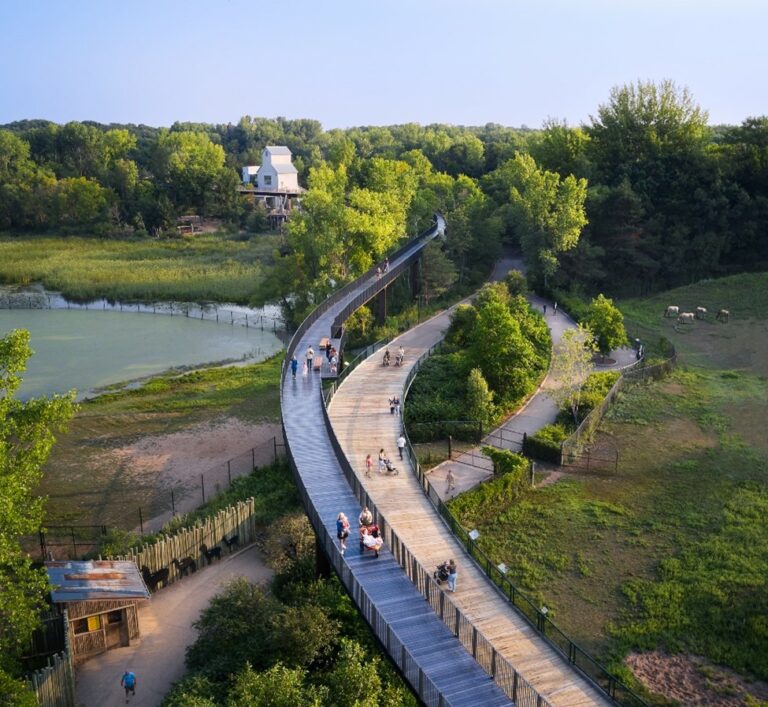The Grandfather Falls hydroelectric dam, located on the Wisconsin River in Merrill, Wisconsin, was originally constructed in 1938. The two 1,325-foot-long wood stave penstocks, or large-diameter pipes, that transport water from the dam’s reservoir into the facility were replaced in 1975. But after more than 40 years of service, they were no longer able to operate efficiently, and were leaking during times of high water flow.
This past summer, Wisconsin Public Service Corporation (WPSC) embarked on a project to replace the ailing penstocks with new ones made of steel. Technology has changed significantly since the inception of this critical infrastructure; planned modifications to the utility embodied new techniques, materials, and quality control procedures on the part of all parties involved.
The project began this May with the demolition of the wood stave penstocks, followed by the demolition and removal of the penstock concrete saddle supports. Specific areas of the concrete mat foundation were also demolished, such as at thrust blocks, expansion blocks, and storm drain appurtenances. Mid America Pipe & Fabrication, a piping fabricator based in Scammon, Kansas, manufactured the 13.5-foot and 11-foot diameter steel penstocks used in the project. To reduce the total length of the weld and maximize the penstocks’ strength, each 40-foot section (comprised of stock-size steel sheets and plates) was welded in a spiral configuration instead of the traditional circumferential and longitudinal welds. Mid America’s quality control procedures included ultrasonic inspection on each penstock section before it left their shop.
The WPSC selected AET to perform the welding inspection and continuous monitoring of all site steel fabrication, as well as to provide a mass concrete plan and monitoring for the headwall and thrust block structures. Because the setting and curing of concrete is an exothermic reaction (i.e., it produces heat), the hydration temperatures for mass placements must be meticulously managed to avoid unwanted thermal cracking.
Next up came the installation of storm drainage features, including installation and compaction of the ballast materials on top of the penstocks.
Garney Constructors, a moving water piping specialist from Kansas City, Missouri, served as the general contractor, while AECOM was WPSC’s on-site project manager and construction management representative.
O.J. Boldt Company of Appleton, Wisconsin, provided on-site construction services. National Welding Corporation of Midvale, Utah, performed all of the on-site subcontract welding.
Steel penstocks have an expected service life of 80 years—nearly double that of those made of wood stave. With its new penstocks now in place, WPSC can expect to reduce fuel costs and increase the amount of renewable energy it provides to the grid for many years to come.
For more information about services provided on this project please visit our Nondestructive Testing page.



